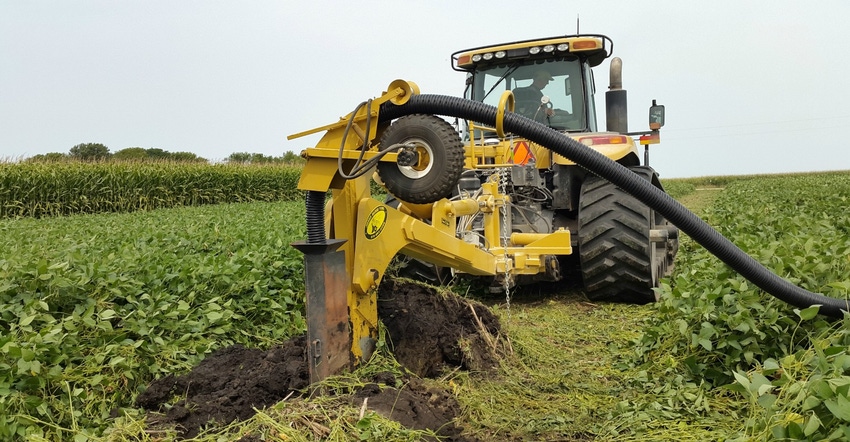June 29, 2018

Ag drainage is an important management tool for crop production in many areas of Iowa. Design, installation and maintenance of drainage systems is the focus of the Iowa Drainage School on Aug. 21-23 at the Borlaug Learning Center on the Northeast Iowa Research and Demonstration Farm near Nashua.
“The Iowa Drainage School provides educational opportunities for anyone interested in drainage: contractors, farmers, consulting engineers, county officials or others,” says Matt Helmers, ag engineering specialist with Iowa State University. “The school focuses on fundamentals of drainage design, including getting an accurate survey, drainage pipe size and spacing, controlled drainage and water table management, legal considerations, and installation techniques and equipment.”
The three-day school features classroom lectures and discussions combined with team problem-solving and field exercises. Teams will survey and design a drainage system for a sample area of the host farm, using concepts learned in the classroom. By attending this school, participants will be able to plan and lay out subsurface drainage systems and work out project costs. In-field equipment and drainage tile installation demonstrations are also covered.
Points needing attention when planning a subsurface drainage system include:
• laws
• soils and topography
• capacity and intensity
• installation quality
• environmental considerations
Drainage contractors, engineers and consultants, landowners, farmers, agency staff and others interested in subsurface drainage should not only pay attention to these key features, but also develop a comprehensive understanding of how subsurface drainage systems function.
Environmental considerations
Subsurface drainage of wet and saturated soils helps remove excess water, reducing plant stress by allowing aeration of the root zone. This excess water removal allows soils to enhance productivity, but the water has the potential to carry nitrate-N, one of the forms of nitrogen the plant takes up when it absorbs water through its roots. Nitrate-N is essential for plant growth, but its loss with subsurface drainage water can potentially lead to water quality problems.
Practices to help reduce the amount of nitrate-N lost from farmland need to be considered when planning a drainage system. Such practices include wetlands, bioreactors, controlled drainage, saturated buffers, shallow drainage, and winter forage or cover crops.
Registration for the three-day school is $350 per person if registered by midnight Aug. 10. Late registration is $400 and must be received by midnight Aug. 17. Class size is limited to 40 participants; preregistration is required. Meals, refreshments, course notebook and drainage reference materials are included. Program information and registration is at aep.iastate.edu/ids.
For assistance, call 515-294-6429 or email [email protected].
Source: Iowa State University
You May Also Like




